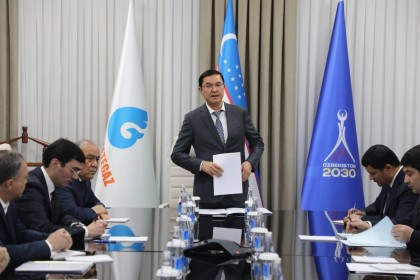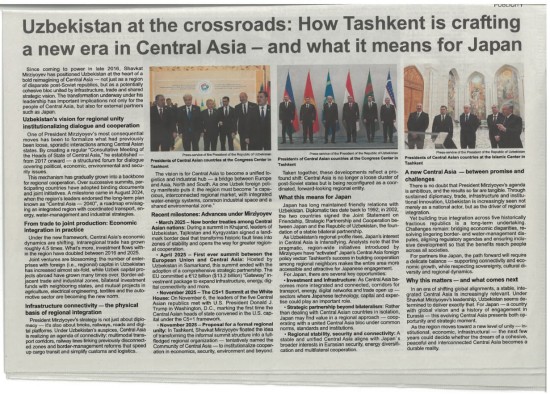“Water is more than just a resource,” says Kakhramon Djumaboev, a researcher at the Central Asian Regional Representative office of the International Water Management Institute (IWMI) in Tashkent. “Think of water as life; it is everyone’s responsibility to save it. In a country like Uzbekistan with scarce water resources, every drop of the water should count.”
As an agronomist’s son born in the desert during the famous expansion of agricultural lands, Kakhramon’s life has always been intertwined with water. His father took part in the development of so-called “virgin lands” in Uzbekistan’s Mirzacho’l desert located on the left bank of the Syrdarya River, known also as the Hungry Steppe because of the complete absence of life. The Soviet government initiated an extensive land reclamation campaign to open up a vast tract of steppe land for grain and cotton cultivation by bringing water to the area. “My father took an active part in it,” Kakhramon adds.
Initially, it was a necessity to expand cotton fields and irrigated areas, Kakhramon explains. However, the negative consequences followed quickly - diverting water from the Amudarya and Syrdarya rivers to feed cotton fields in the desert prevented water from reaching the Aral Sea, once the fourth largest lake in the world. The lack of river flow reaching the Aral Sea led to it drying up. The desiccation of the Sea severely affected the flora and fauna of the region and added more pressure on ground and surface water resources.
With 4.3 million hectares of arable land, the agricultural sector is the largest consumer of water in Uzbekistan. “While more than 90 percent of water is used in agriculture, nearly half of the irrigated land is under pump irrigation, where the water is pumped to elevations as high as 150 meters from the Amudarya River ” Kakhramon stresses.
According to available data, pump irrigation stations consume about 20 percent of the generated energy in the country, the government additionally spends $450 million for energy subsidies for the pump irrigation operations every year.
In 2016, with support from USAID’s Partnerships for Enhanced Engagement in Research (PEER) program, Kakhramon and the project team began studying how to improve the efficiency of water use in the Amudarya River basin in Uzbekistan and Tajikistan. PEER is a grants program that funds scientists and engineers in developing countries who partner with U.S. government-funded researchers to address global development challenges. The goal of PEER in Central Asia is to improve transboundary water management for better cross-border cooperation and decrease water waste.
According to Kakhramon, water, energy, and food are essential for human wellbeing and lie at the heart of sustainable development. In the scientific world the interlinkages between these three sectors are known as the water-energy-food nexus approach.
The research Kakhramon and the team conducted was in the Karshi Steppe in Kashkadarya region of Uzbekistan, where large volumes of water are lifted to an altitude of 153 meters by using seven pump cascades to irrigate 335,000 hectares of land. Currently, the Karshi Steppe region uses 2 billion kilowatt hours of electricity per year to lift five billion cubic meters of water. With inefficient traditional furrow irrigation, 30 percent of this pumped water flows back to the river through a drainage system and pollutes the surface water and environment. Experiments with the drip irrigation method showed promising results, using less than half the water of flooded furrows. “Overall, the efficiency of drip irrigation was very high compared to conventional furrow irrigation, with additional benefits such as less fertilizer use, reduced runoff, and improved yield and water productivity,” Kakhramon says.
“If the government shifts subsidies in the agricultural sector from energy to water saving technologies, it will improve water use efficiency by 30 percent, minimize the polluted return flow, and save energy. Since up to 80 percent of energy in Uzbekistan is generated from natural gas, which is associated with carbon emissions, the results of our research indicates that improving water and energy use in the pump irrigated areas significantly reduce carbon emissions,” Kakhramon concludes.
Using the result of the USAID- funded research, the Government of Uzbekistan developed a program on water saving technologies that was approved and signed into effect on December 11, 2020 through a Presidential resolution. The program creates incentives for water and energy savings and covers up to 40 percent of drip irrigation costs to farmers and exempts them from single land tax for five years.















